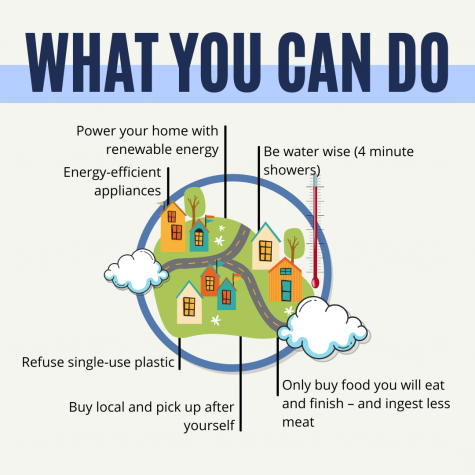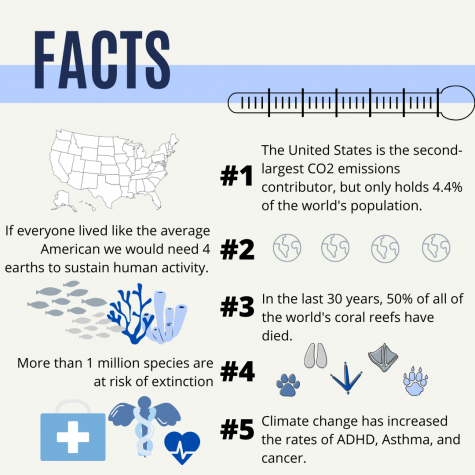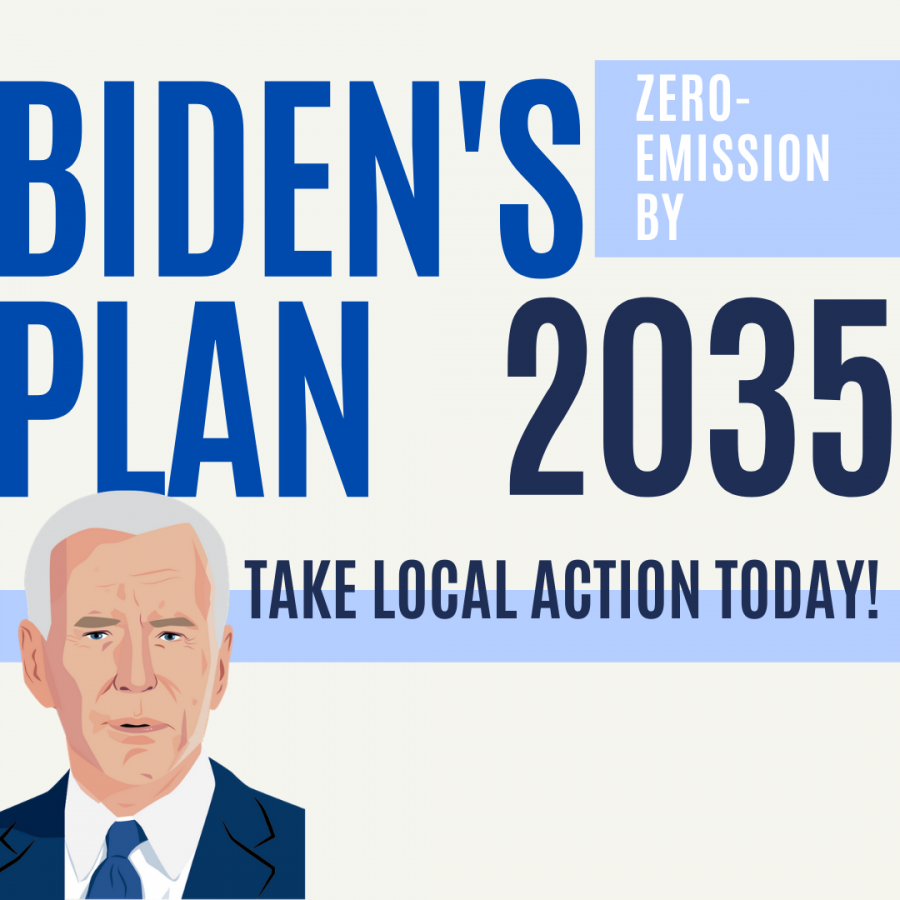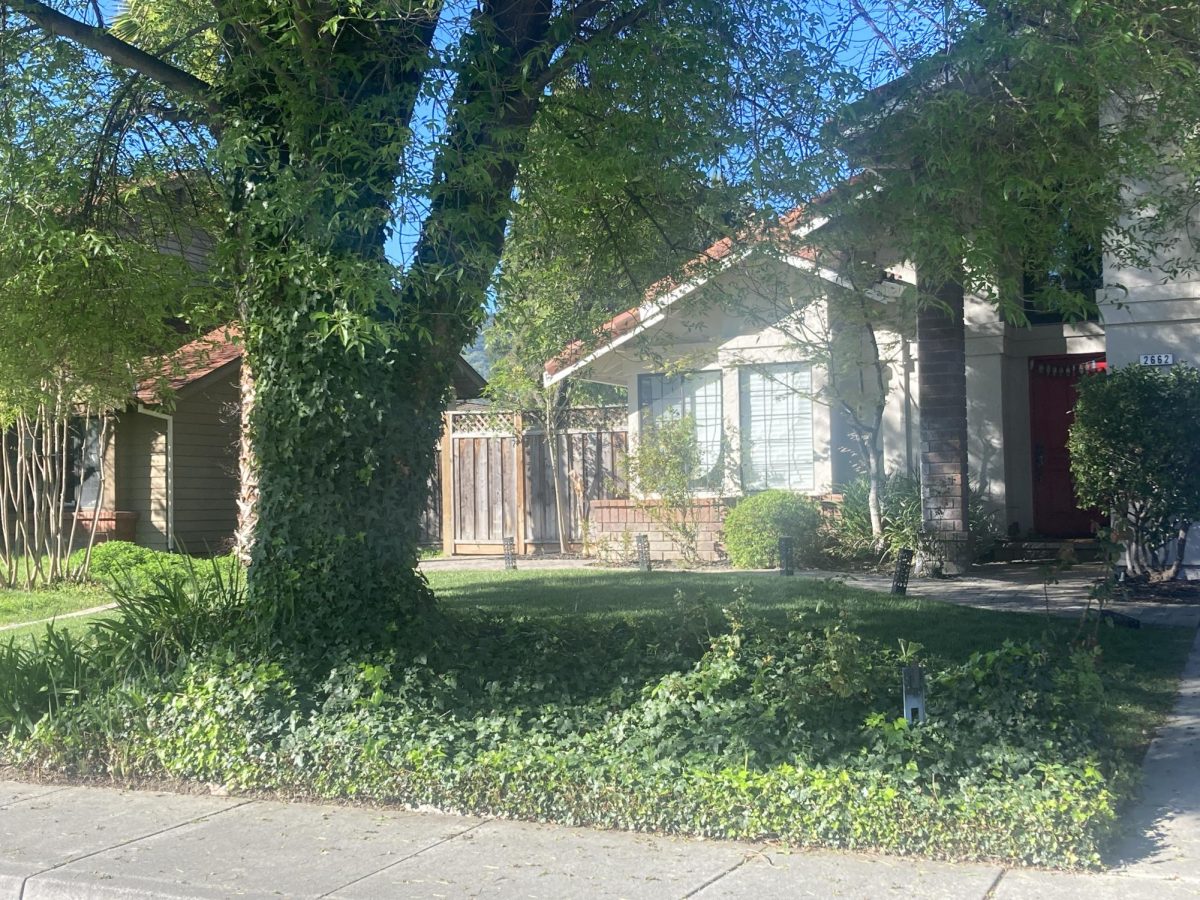A New Era of Environmental Change
We are in this together as a nation!
February 25, 2021
Within Biden’s first few weeks in office, he has begun tackling the climate crisis. This marks the first step forward and the end of denialism. Although this is the first time that a president has acknowledged climate change, many people are aware of the problem.
“Climate Change is one of the most urgent issues today. We will eventually reach a point from which there will be no turning back. It is important to act before we get there,” said Stacey Sklar, a former lawyer, and current AV Competition Civics Coach.
Some examples of the effects of the climate crisis are the fires that ravaged all through the west coast. It is evident that these fires happen in a pattern and are not sporadic.
“I see extreme weather events continue to increase in frequency and impact – this includes droughts, floods, wildfires, and etc. We need to do our best to manage resources to prepare for extreme weather events and also prevent these events from getting worse” said Olivia Sanwong, President of Zone 7 Board.
What is Biden doing or will do?
Some steps that the Biden administration has taken to curve the path of climate change include rejoining the Paris Climate Agreement and ending the Keystone XL pipeline. By doing this, he is welcoming renewable sources of energy: wind, solar, hydro, and more.
“[global warming] has risen to become one of the more powerful entities in the environmental realm over the last ten years. I teach these topics since I find it critical to be aware of them to be able to move towards a sustainable future,” said Peter Svensson, an environmental science professor at West Valley College.
Over the past decade, the increased impact of humans on the environment has been detrimental. We as a country have completely reformed the planet and concurred with its limited natural resources. Some scientists believe that the point of no return may be less than a decade away, 2030 to be exact.
“On an inner level it has more to do with a respect for all living things and the problems humanity is causing for life on earth,” said Svensson. He continued with the fact that the problems are deeply ingrained in capitalism, “our economy – capitalism is not working. We must tweak parts to accommodate sustainability. We cannot grow continuously in a realm with limited resources.”

Local Reforms vs. National Reforms
California’s climate policies have been the model for Biden’s current executive orders and former president Obama’s policies in the past. Sadly Trump has reversed or blocked many of the executive orders made by Obama.
“Local [reform] can sometimes be a bit more radical because it only needs to reflect those in a smaller area, and like-minded people tend to live together in “bubbles,” so we see great variation in how different municipalities recycle and purchase energy. But the federal government protects a large swath of land,” said Sklar.
While locally Pleasanton had the Climate Action Plan (CAP), to reduce mass emissions by 15%. Pleasanton achieved that goal by almost double, reducing the mass emissions by 28%. Transportation contributes to 56% of all emissions in Pleasanton.
“To me, some of the most important areas that need to be addressed include investment in renewable energy and the redesigning of large businesses’ sustainability plans with the economic changes of the pandemic,” said Luana Yang (‘21), a Go Green Initiative intern and environmentalist.
Without a doubt, Pleasanton is a sheltered community, but it has approved a renewed CAP 2.0 plan to reduce even more greenhouse gas emissions, trying to adapt to new state legislation calling for carbon neutrality by 2050. But this may be harder to achieve.
“A well-to-do suburb of the Bay Area, it’s fair to say that a majority support efforts to protect the environment. However, the vast majority of people commuting in cars. To be clear, I’m not immune from this, I just reverse commute in. Pleasanton is built around driving and single-family homes. How can you overcome that kind of historical weight? I don’t think Pleasanton itself is capable of answering that question if anyone can” said Eric Wadkins, former press secretary for the senate and current AV social studies teacher.
Awareness

Just because the solution to the climate crisis will be drastic doesn’t mean we should give up. We can beat the climate crisis with upcoming reforms.
“Generation Z is educated fairly well because they grew up with these issues. But, as with any generation, some are better informed than others. Teens will often find it tempting to adopt the positions held by their parents, but once they get to college, most will form more
independent ideas” said Sklar, who is seemingly hopeful for the future.
On the other hand, some disagree about how educated the overall population of the United States is.
“There is an extreme lack of awareness of how severe these issues are. Washington is a great example of the lack of education. I think it goes across the generations – culturally we are separated from nature and the connections are not made. We depend on the natural processes of the earth’s ecosystems. [Sadly] don’t think many people understand that,” said Svensson.
The costs
With the polarization of politics being pessimistic is understandable.
“Neither plan can be implemented in the present, outside of the more limited scope of executive actions. But that’s okay, abolition wasn’t on the table either in the 1830s, yet activists kept pushing for their goals. Ultimately, I suspect that any real climate plan won’t resemble either plan. [But] the only way change has ever occurred in America is due to the concerted efforts of organized groups often pushing back against existing structures.” said Wadkins.
Biden’s environmental plan will use cost a purported two trillion do
llars in the next four years to be used to create clean energy for transportation, infrastructure, and research and development, creating job opportunities along the way. Biden hopes to achieve an emissions-free power sector by 2035.
“It does seem like a big investment, but we don’t have a choice. The cost for environmental disasters, if we don’t act, would not just be money, but people’s lives and the welfare of the nation. If America starts the act, other countries will soon follow and it will benefit not just America in the long run, but the whole world,” explained Mark Zhou (‘23).
There are some financial downsides to the plan, however. Although increasing corporate taxes may cover some of the costs, residents – especially people who earn at least $400,000 a year – will have to pay increased taxes to fund these projects.
Although steps have been taken to reduce the steady advances of climate change, there is still a long way to go. For more information, visit NASA’s climate change site to see the steps to be taken.
Take-Aways
“In the face of humanity’s greatest needs have come humanity’s greatest innovations. Don’t wait until you’re a certain age, don’t wait until you have a certain degree, and don’t wait until you have a certain income to get involved. There is a role for every single person. We absolutely can make a difference, and frankly…we absolutely must” said Jill Buck the Founder of the Go Green Initiative which encompasses our community.
We must deal with these issues promptly to look into our futures. Our community, country, and world work to work towards sustainability and reconnecting with nature.





